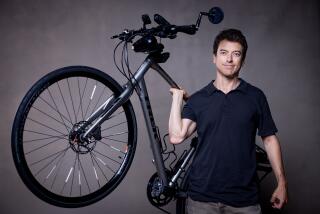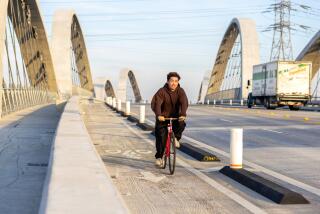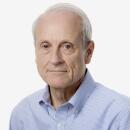Sorry cyclists: The bicycle movement still has a distance to travel
Spend enough time with cyclists and cycling and itâs easy to believe that the world has changed: that the bike has taken over, that pollution is in retreat, that the obesity epidemic has met its match, that the post-World War II thinking about mobility â move fast, in single-occupancy cars â is ancient history.
Thatâs especially true at the California by Bike summit, underway in Oakland, where a couple hundred or so cycling advocates have gathered to confer about their movement.
So for the advocates, it was sobering to hear California Transportation Secretary Brian Kelly, at the opening session Thursday evening, cite some statistics from a pair of Public Policy Institute of California polls, one in 1995 and one in 2011. The numbers arenât about bike ridership but about the more basic question of leaving the car behind.
FULL COVERAGE: Sharing the road in L.A.
The earlier study showed that 5% of California commuters took public transit to work. Nearly a decade later, the number had risen â but only to 5.5%. Kellyâs statement was met with a groan from the cyclists.
And just like in the â90s, he said, 77% of people still commute to work by riding alone in their cars.
Numbers cited by John Burke, president of Trek Bicycle Corp., were similarly deflating. Ten years ago, he noted, 1% of people in the U.S. moved per day by bike. Today, the number is up â to 1.4%. In some European nations, such as the Netherlands, it is closer to 25% a day.
So the bicycle movement still has a distance to travel.
Burke offered a somewhat curious call to action: Check out the National Rifle Assn. How does such a small group of people have such great influence over law and policy?
âYou can get mad about it or you can learn from it,â he said. The lesson is to build a base and turn enthusiasts into activists. Getting the cycling community to campaign and to vote might have made a difference in a 2010 election, he said, in which cyclist Jim Oberstar, a longtime Minnesota congressman and champion of federal funding for cycling and pedestrian programs, was narrowly defeated by a tea party Republican.
Cyclists actually have moved pretty far pretty fast in California, and there is in fact a desperate need for the state to move beyond half-century-old transportation planning and spending policies. But will Californians catch up, actually use the thousands of miles of new bike lanes and get out of their cars for their daily commutes or their short trips to the store, the kidsâ school or the dry cleaners? Thatâs a little more iffy.
ALSO:
Legalize L.A.âs street vendors
Want to create problems? Arm the TSA.
Dodd-Frank: Obamaâs other big bad law
This post is part of an ongoing conversation to explore how the cityâs cyclists, drivers and pedestrians share and compete for road space, and to consider policy choices that keep people safe and traffic flowing. For more: latimes.com/roadshare and #roadshareLA.
More to Read
A cure for the common opinion
Get thought-provoking perspectives with our weekly newsletter.
You may occasionally receive promotional content from the Los Angeles Times.











